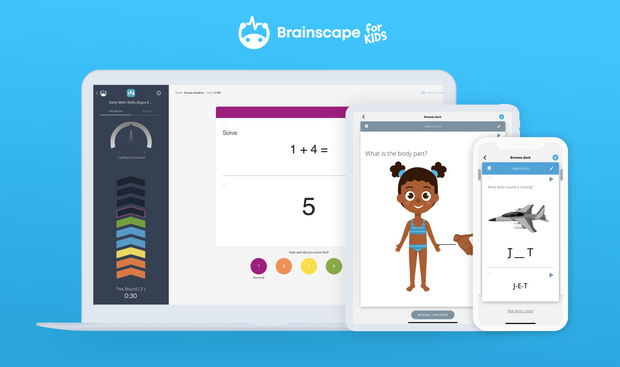Of all the reasons one might want to raise kids, the ability to guide their education is among the highest. To impart wisdom, tell them stories, and watch as their minds expand as they soak up this world’s vast array of treasures is among life’s greatest pleasures. You’re reading this because you’ve discovered the ultimate tool to unlock that treasure—Brainscape—and want to know how to use it to teach your young kids effectively and efficiently.
The great news is that Brainscape is easy and intuitive to use, so you’ll get the hang of it after just a few minutes of exploration; perhaps downloading flashcards that interest you from our vast Knowledge Genome or even making some of your own.
But while Brainscape is easy and intuitive for adults and older kids to learn, tots like yours (who are very likely Pre-K or in the years of early education) will need your guidance to start using it (and that's actually a good thing). We’re going to show you how you can do that using Brainscape’s expert-curated Early Childhood Education flashcards!
Brainscape is the best preschool app for kids
Brainscape is the loving brainchild of a team of engineers, learning scientists, and parents who are deeply fascinated by how the human brain is hardwired to learn. We have spent years studying decades of cognitive science research and—using proven learning principles like spaced repetition, active recall, and metacognition—have engineered the algorithm that makes Brainscape such a powerful learning tool.
Today, Brainscape helps serious learners of all ages to learn faster and remember for longer, but our collection of Early Childhood Education flashcards is specially designed for young kids who are only just starting to learn fundamental skills like reading, numeracy, communication, and emotional intelligence.
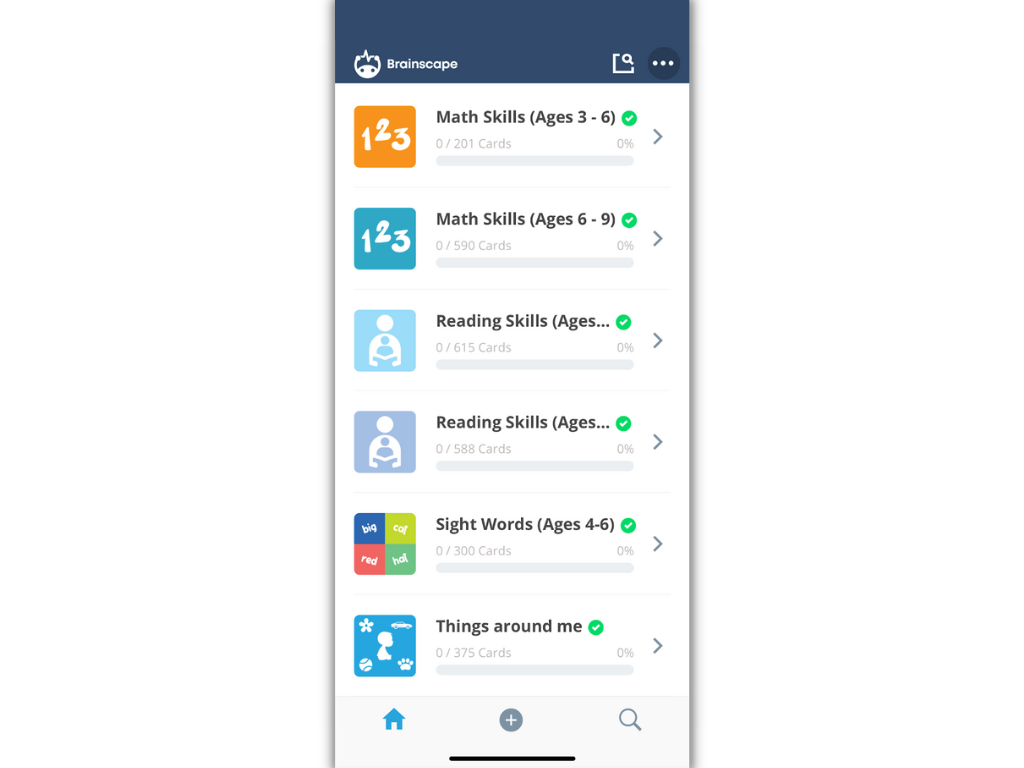
We have broken down the complete recommended curriculum for preschoolers into their most fundamental building blocks, which you can easily review with your child at their precise pace of learning, covering:
- Reading skills (for age groups 4-6 and 6-8): Letter names and sounds (ABCs), sounding out words, alliteration, and rhyming.
- Numeracy skills (for age groups 4-6 and 6-8): Numbers, counting, concepts like quantity, basic math, and colors
- Things around me: common objects, animals, people, places, weather, anatomy, emotions, and so much more.
- Sight words: words that are hard to define but commonly used in language, like “be”, “but”, “do”, “have”, “he”, “she”, “they”, “was”, “what”, and “with”, etc.
- Multiplication tables: for when they get older! (Read this guide to curate the best study experience for them.)
Importantly, your kids will LOVE playing with these engaging and colorful flashcards; even more so because it means spending quality time learning with you. And all the while, you’ll effectively be helping to prepare your kids for kindergarten, and to access vast worlds of endless fascination through reading, numbers, and science!
Read: How can I teach my young kids at home?
What’s different about Brainscape compared with other early preschool learning apps?
Quite simply, what sets Brainscape apart from other childhood learning apps is that our smart, adaptive flashcards leverage the way the brain is fundamentally hardwired to help your kids learn TWICE as fast as traditional methods. But it requires the involvement of a parent or guardian to show them how to do one of the most important actions in Brainscape: self-assess.
Brainscape isn’t a preschool learning app you put in your kids’ hands to “babysit” them. It’s a serious learning tool that requires your participation. Here’s why (and how) …
If you’ve used Brainscape yourself, you’ll be familiar with the self-confidence rating system. How it works is simple: open Brainscape on any device, select a class and a deck of flashcards to study and begin. The question side of the first flashcard will pop up with some kind of prompt, like the following …
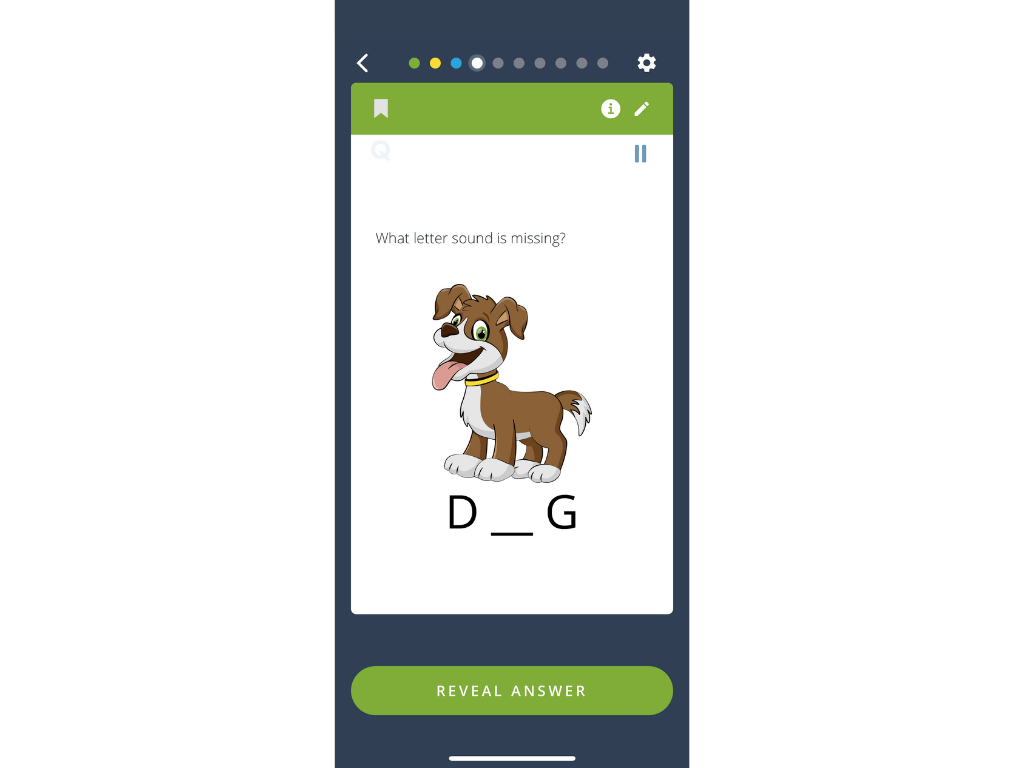
Encourage your kid to answer the question from memory (which exercises their powers of active recall, a powerful learning principle much better than multiple choice recognition), then to turn over the flashcard to reveal the answer.
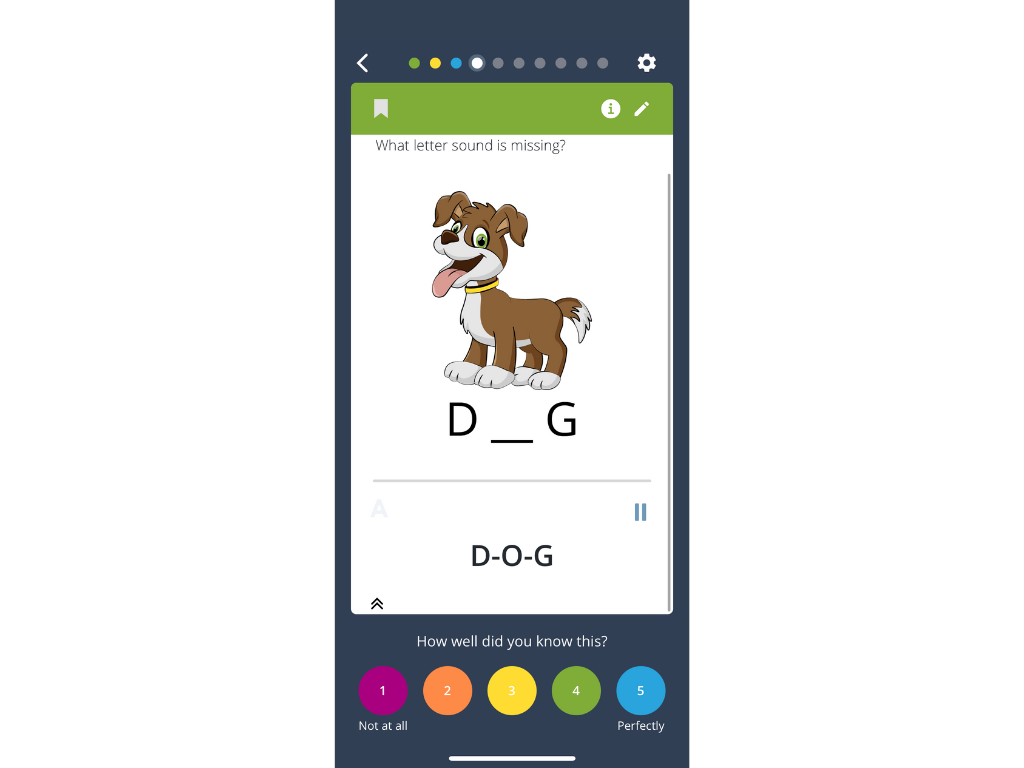
Now comes an important step: you need to guide your kid to rate how well they know the answer on our scale of 1 to 5. There are no prizes for scoring high here. They’ll benefit MOST from Brainscape’s learning algorithm if they provide an honest rating with 1 being “not at all”; 3 being “they got there eventually but struggled”; and 5 being “they knew it instantly and well”.
This rating then automatically determines how frequently that flashcard will be repeated again, with the concepts your kid struggles with the most being repeated more often, and those they know confidently being repeated less often.
In this way, Brainscape drills learners on their weaknesses while saving them time on reviewing the information they already know well. The algorithm works the same for everyone, irrespective of what you’re learning.
Read: What I learned about parenting from training my dog
But here’s the thing: young kids are yet to fully hone the ability to honestly self-assess. They just want to score 5 out of 5, even if it means being a little dishonest about how well they actually know something.
And so it requires you to help them: to not only assess them based on their reaction to a flashcard but to guide them through this process of metacognition (compelling them to think about their thinking). This kind of objective self-awareness is a really important life skill that will help them throughout the rest of their scholastic and professional life. And they’ll be learning it right here with you as you use Brainscape together!
Of course, over time, your child will begin to understand how Brainscape’s confidence rating system works and may even become motivated to use the app on their own, at which point you can use Brainscape to “babysit” your kids while you do some work or take a little well-deserved downtime.
But until they’re able to honestly and objectively self-assess how well they know what they’re learning, you’ll get the most out of Brainscape if you do it with them.
Read: What do kids need to know before kindergarten?
What are some tips for using Brainscape with my kids?
Brainscape's collection of engaging Early Childhood Education flashcards are a powerful boost to any human child's development between the ages of 2 and 8. And now that you know how they work, here are some tips on getting the most “juice” from our preschool learning app:
Be stingy with the “5’s”
To correctly work Brainscape’s algorithm, you should be stingy with allocating “5”’s until you know that your kid confidently knows a concept really, really well. Like, so well that if you had to come back and show them that flashcard in a month, they would still know it really well. That’s what a “5” means. So it’s best to wait until a card has been a "4" for a few days before you rate them a “5” … unless you are 100% sure they know it perfectly and will remember it forever.
Go “Progressive” mode
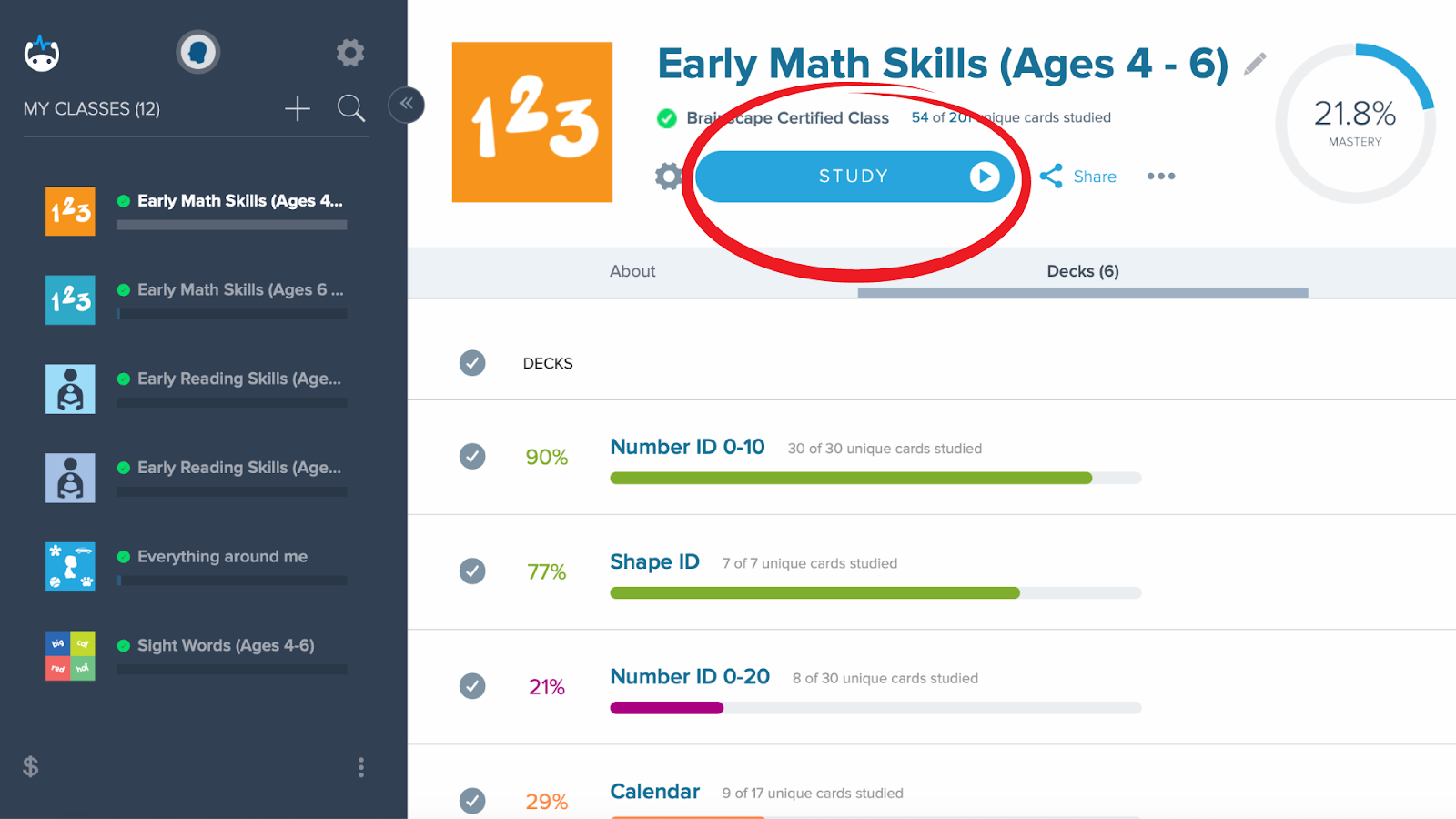
It's often better to study a "Progressive Mix" of all flashcards in a collection, like early math skills, rather than one 10-card deck at a time. This means that your kid will be seeing a mix of flashcards from many decks as they progress, or even ALL the flashcards in the “Math Skills” set, for example. This keeps things fresh, compelling your kids to switch between concepts and really exercise their powers of active recall.
To use Brainscape this way, simply click the big "Study" button at the top of the class, rather than clicking an individual deck.
Encourage real-world applications
Your kid will be learning a ton of new vocabulary with Brainscape’s ECE flashcards. But the perfect opportunity to see if your child recognizes these words in different contexts is when you go outside, in the “real” world. Did they learn the word “flamingo” this week? Well, whenever you see a flamingo (whether it’s a print on a T-shirt or at a bird park), ask your kid what the right word for that bird is. Do it with every word they’re learning. This is ultimately the best way to solidify what they’re learning in the long run.
Praise your kids when they show improvement
Give your child encouraging verbal feedback when they improve their confidence rating, not necessarily when they score a 5. Remember, you want your kids to be motivated by the learning process rather than the “success” outcome. The latter tends to make kids risk averse, since they are so heavily invested in success.
Also, if they associate “5”s with praise, they’ll pursue “5”s at all costs. And since you want them to learn how to honestly self-assess themselves, consider instead praising them when they demonstrate clear metacognitive skills or when they’re able to answer a flashcard quicker and with more confidence.
When they’re ready, let them fly on their own!
If your child eventually becomes adept enough at honestly rating their confidence on their own, then encourage them to continue using the app without you! Just be sure to still give them a goal, like: "I'm gonna quiz you on your 5s later, and if you get them all right, we’ll go to the park and get ice-cream!" or [insert favorite treat here].
A final note on using Brainscape to teach your preschoolers
Behind the fun colors and images of Brainscape’s Early Childhood Education flashcards is an adaptive learning technology that is designed to help your kids (or anyone really) learn TWICE as fast. This is why Brainscape is the best preschool app; but we also have an extensive library of expert-curated flashcards for just about every other subject under the sun (you can browse Brainscape’s Knowledge Genome here).
So when you aren’t using our app to advance your young kids’ education, why not use it to brush up on your Spanish? Or learn your music theory? Or help your teenager with their AP subjects? Or finally win your next pub quiz?
Brainscape is the key to a life of forever-learning, which you and your kids can do anytime, anywhere, and on any app! And if you need a little more advice on rising to the challenge of your kids’ education, check out some of the other awesome guides in our Parents’ Academy:
